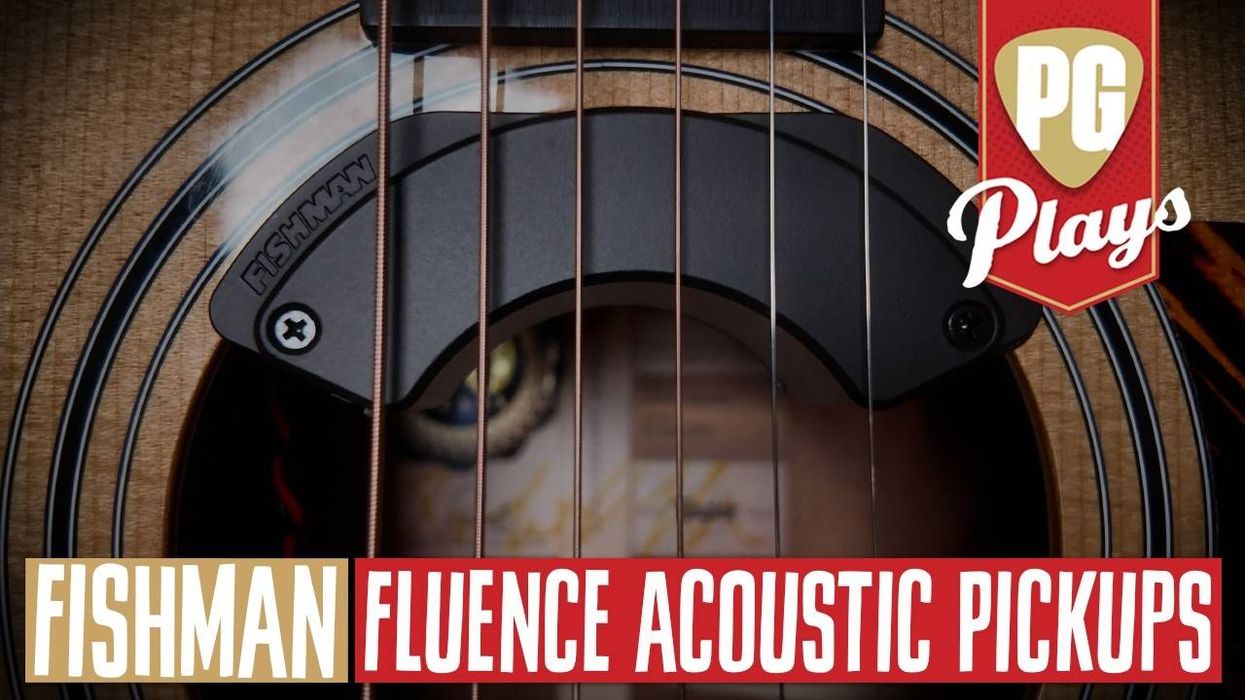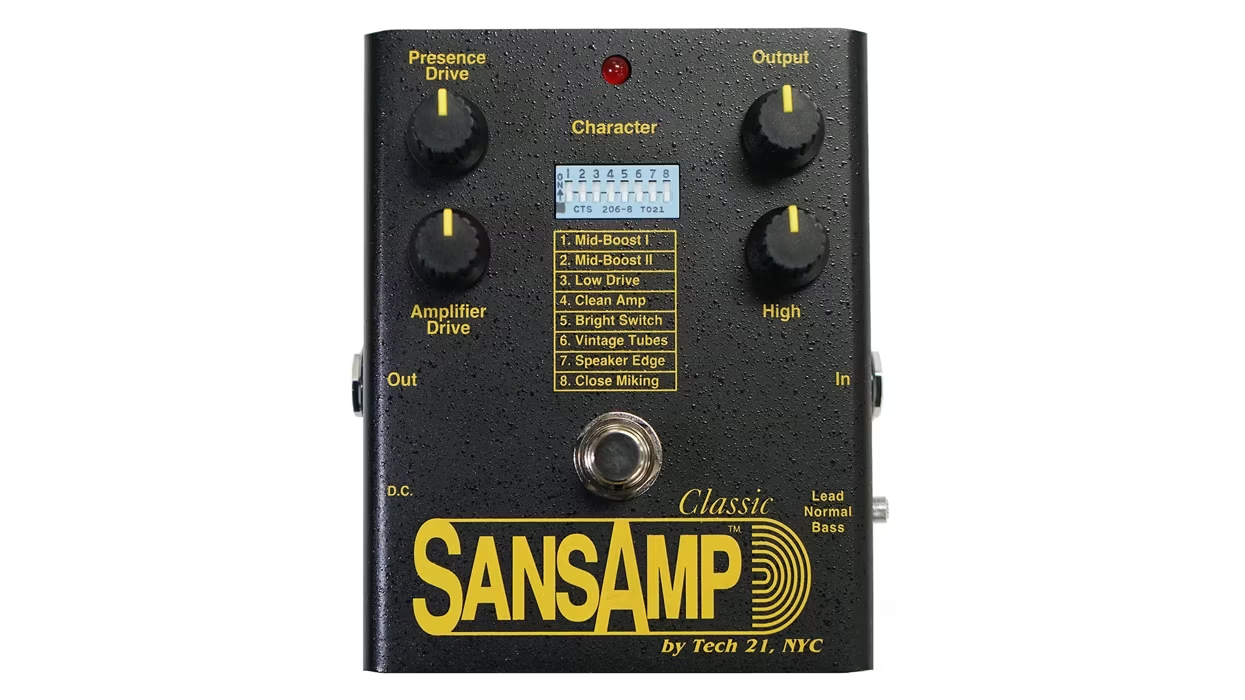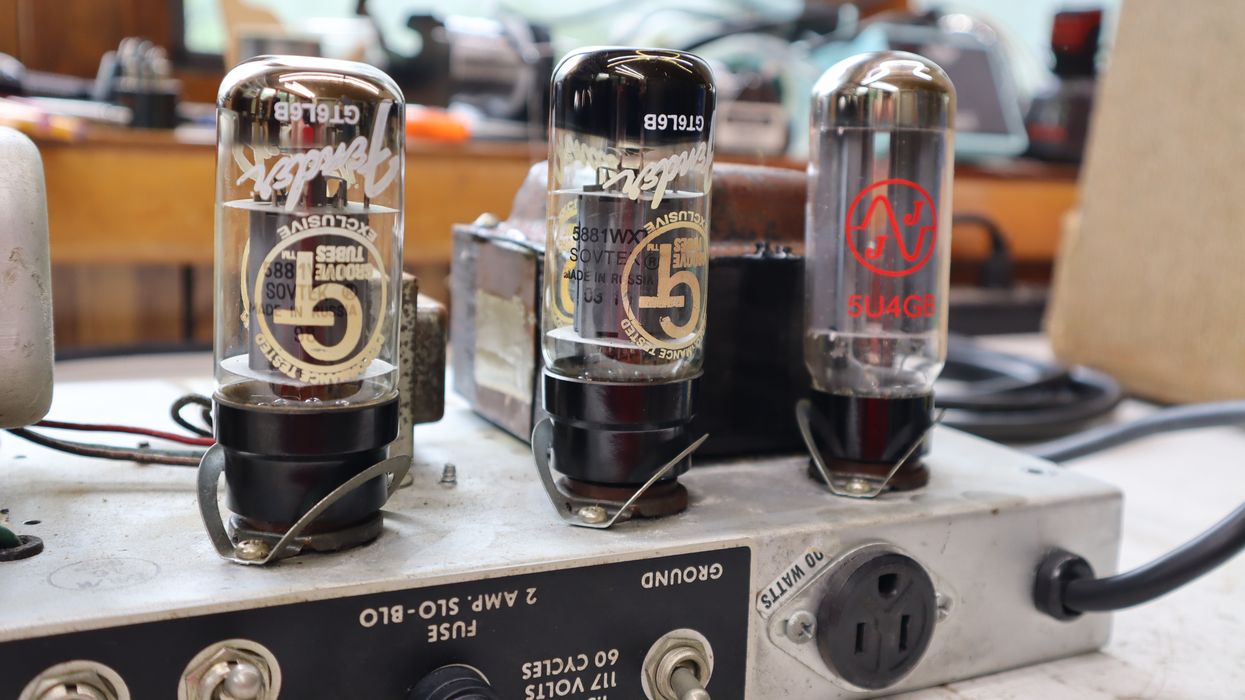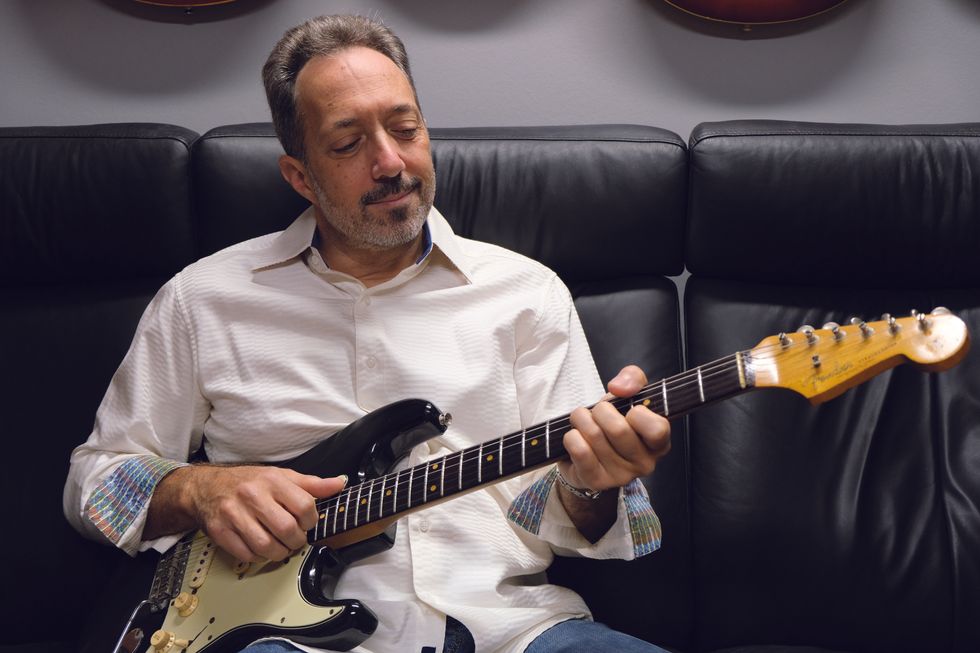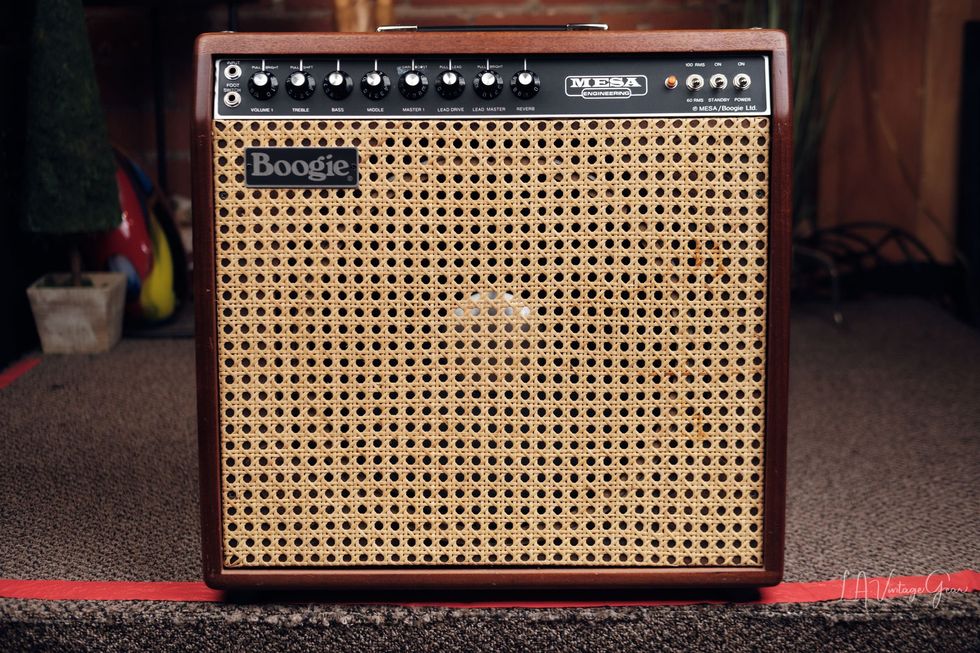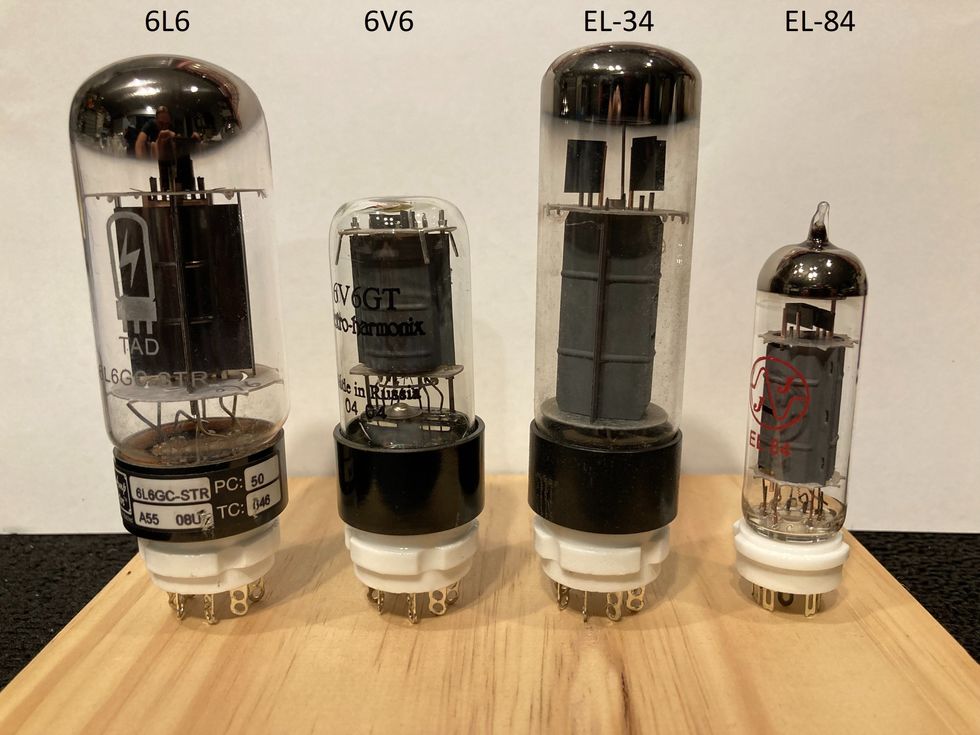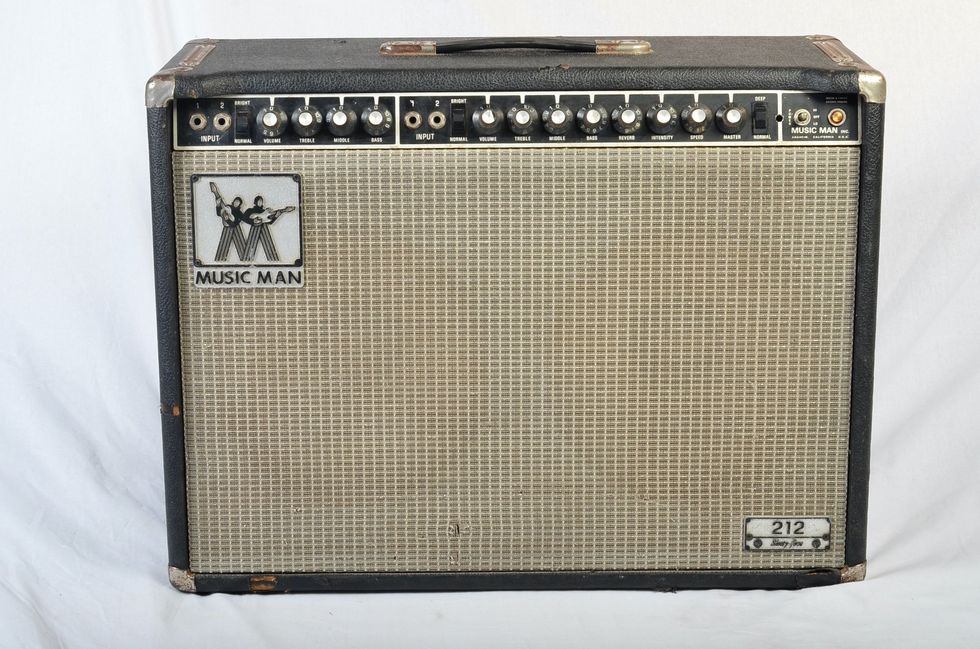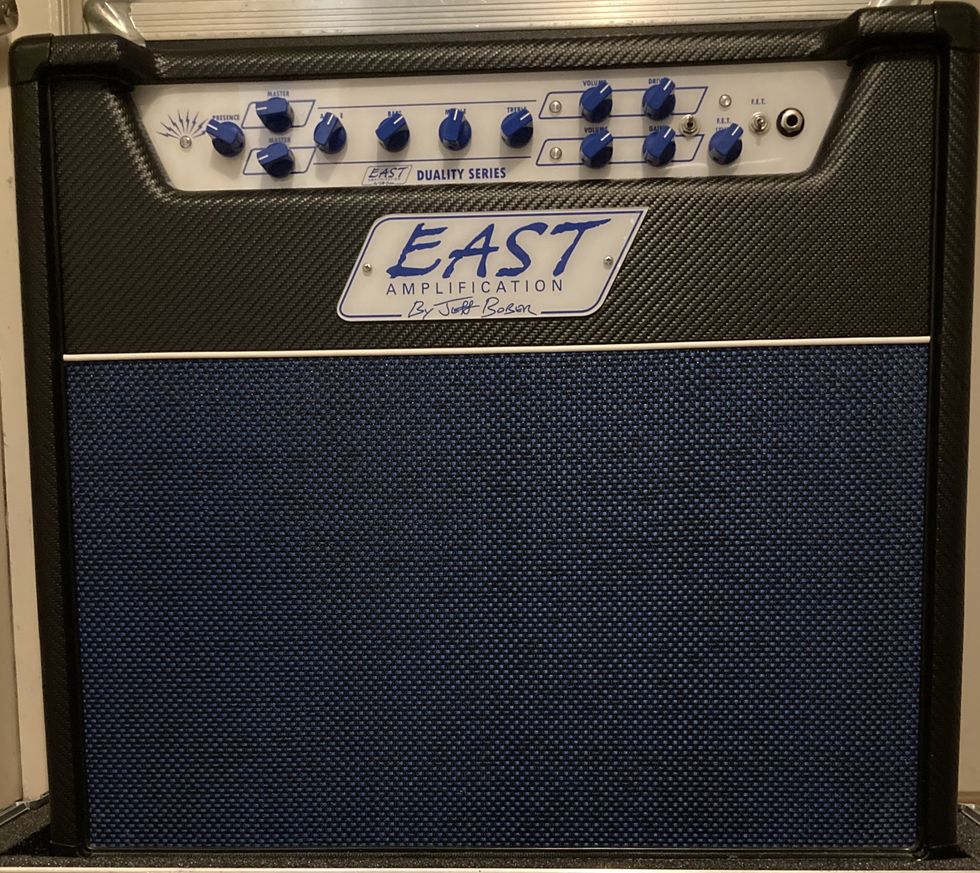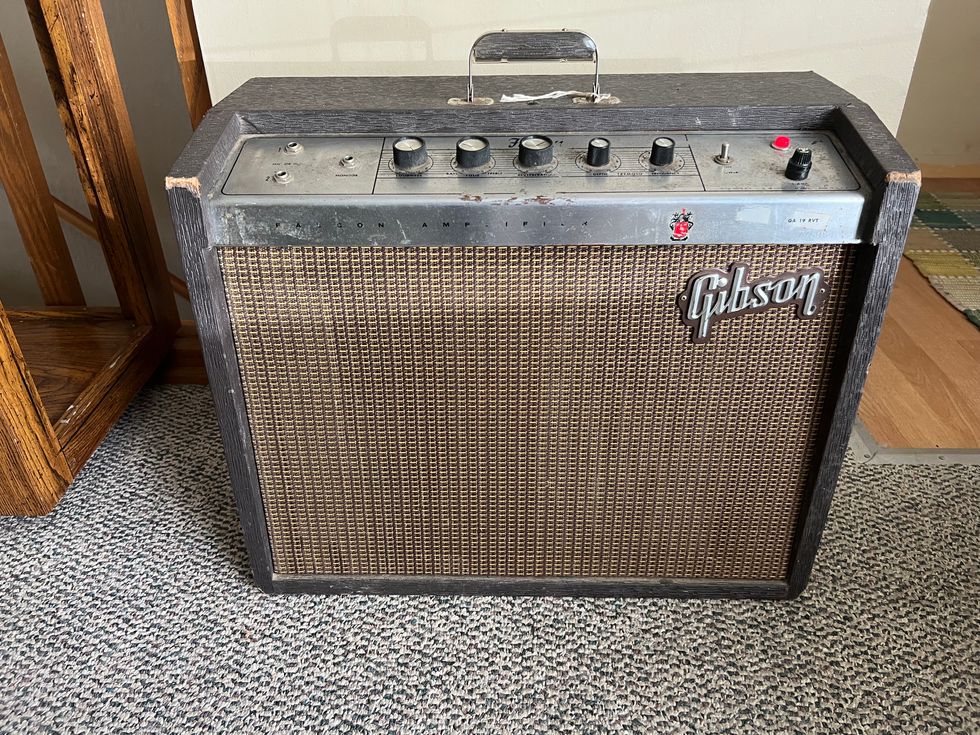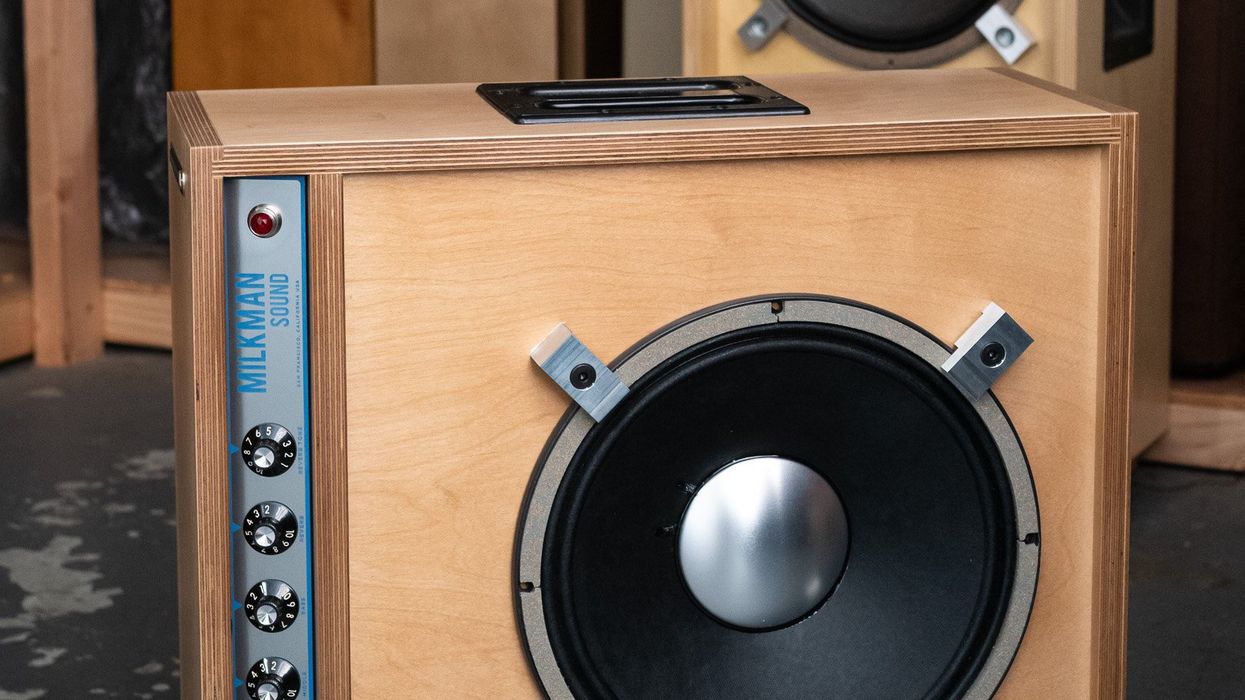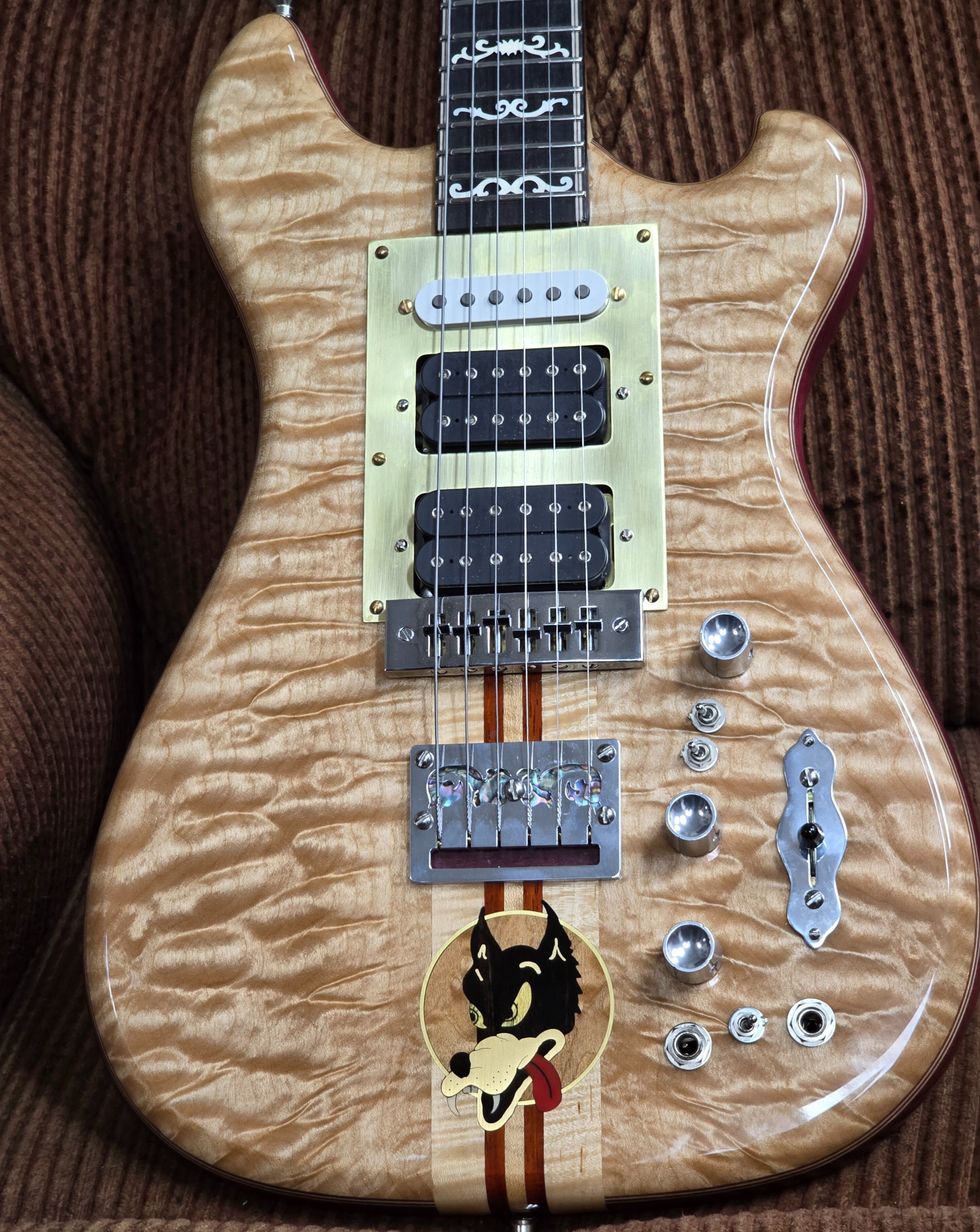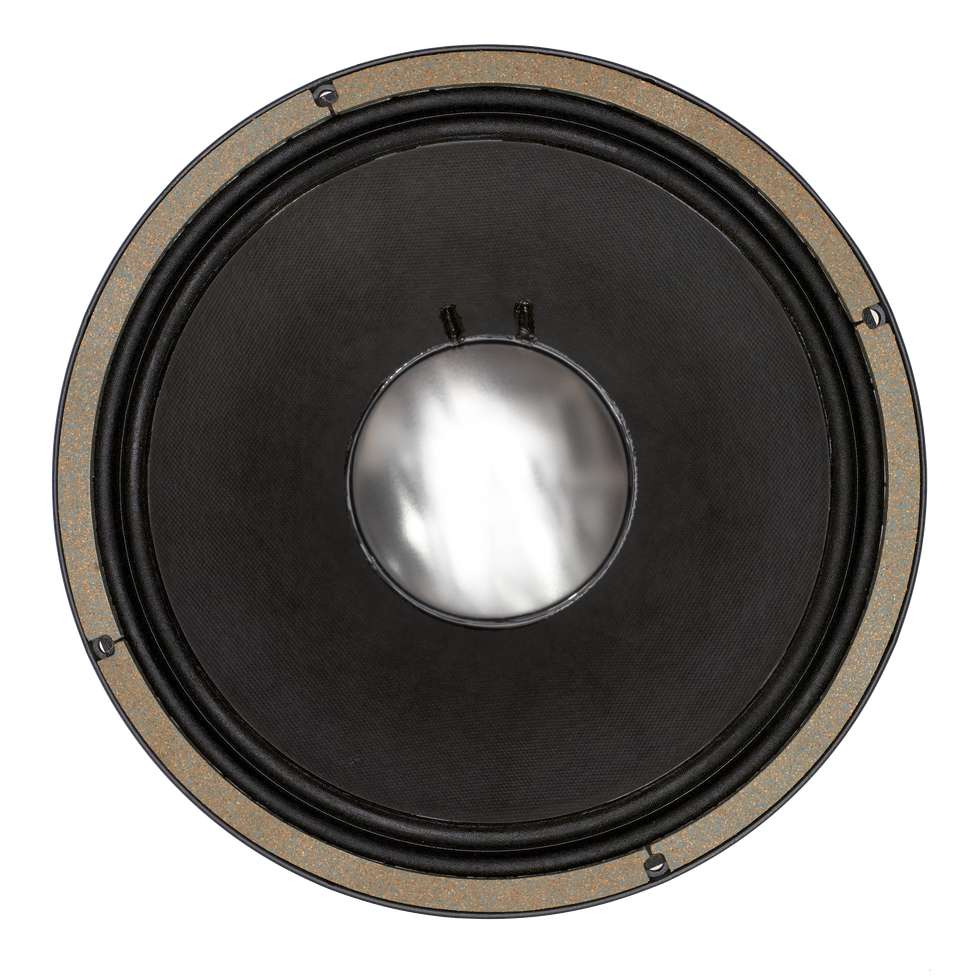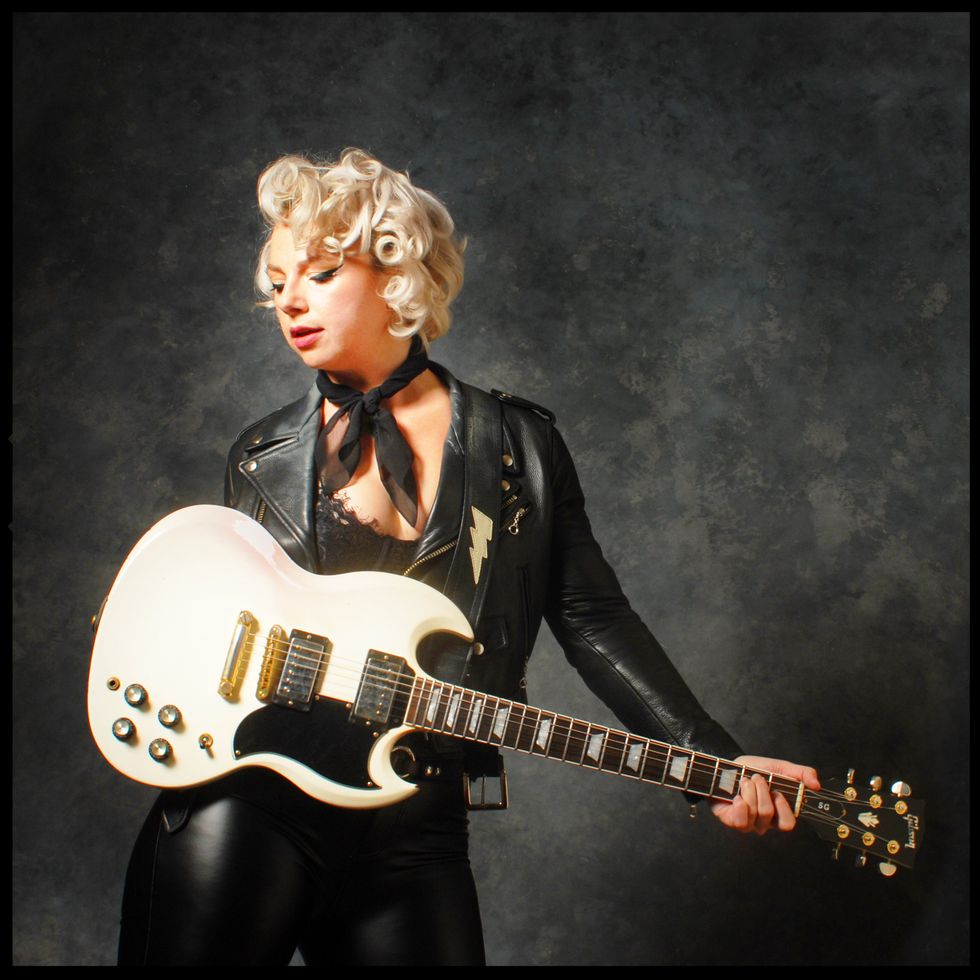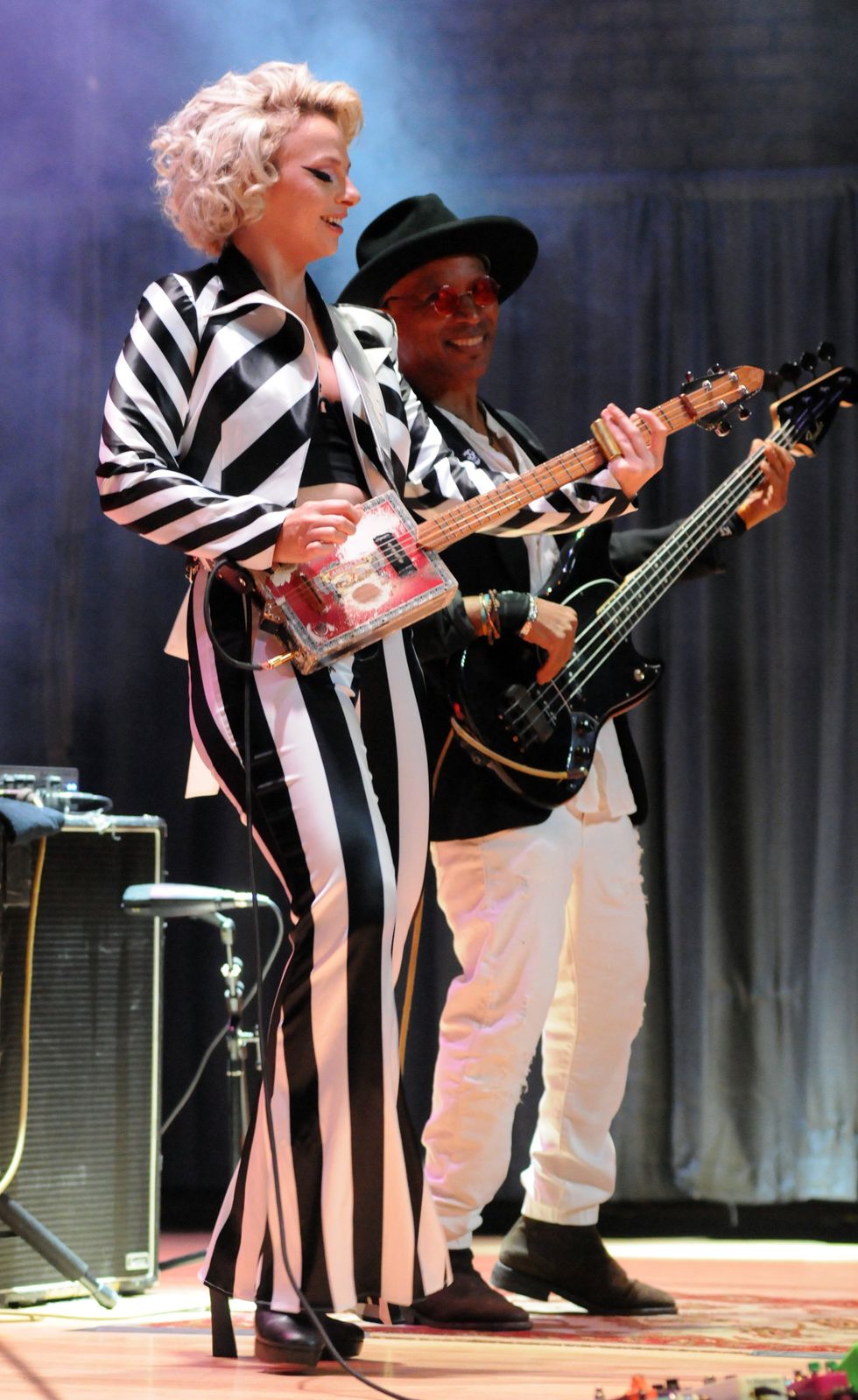| Digging Deeper Click here to read accounts of Loudness and Children of Bodom's use of the GP-1000 from their techs. |
But just as a new era has dawned for metal, so have up-to-the-minute modern players such as Children of Bodom’s Alexi Laiho sought out and utilized certain vintage rack pieces for recording and live performances. Of course, we’re talking about Lee Jackson’s Perfect Connection/ Metaltronix GP-1000 all-tube rack preamp. And speaking of, values have climbed. From the original MSRP of $599 to typical mid-‘90s rock-bottom prices hovering in the range of $100 or less, GP-1000s have most recently commanded $600 and up on eBay. That is, if you can find one.
As a dedicated fan of the shred greats of the day, it was only natural that I would develop a corollary interest in the gear used to craft these high-octane tones. And just as these guitarists were blazing new trails with their six-string aeronautics, so too would the gear they wielded reflect this newly inspired aggression and passion. No longer was it enough to use mere pedals and stock amps. Amps had to be modified. Even the name Metaltronix, no doubt thoughtfully selected to reflect upon and appeal to this new and specialized clientele, carried a certain excitement and cachet. Thus the GP-1000: a dedicated device that would incorporate the fruits of Lee Jackson’s tube amp modifications into one tidy, single-space rack unit. I spoke to Jackson about the legacy of his invention, and the prospects for its comeback.
What was the inspiration for the GP-1000?
Rack gear was just getting started with Bob Bradshaw building these huge racks for pro players, and I started getting asked if I could design a preamp that could be used in his and other guys’ systems. They were looking for something that would go into the racks alongside the mountain of rackmount processing gear: delays, harmonizers, reverbs, etc.
The GP-1000’s original circuit seems to have a Fender inspiration.
At the time of the GP-1000’s conception, I was custom-building Fender Deluxes and Twins for a lot of the L.A. studio television crowd—like Buzzy Feiten, John Goux, Steve Lukather. And when I was asked to build the GP-1000, It was natural to follow the design of what the rack players wanted at that time.
 The author’s collection of GP-1000s includes two very early ‘87 models, a “transition” model from late ’87, and an ’88 model. Photo by Jessica Green. |
Was there a particular Fender amp that served as the inspiration?
One of my most popular amps at the time was a completely rebuilt hot-rodded Fender Deluxe Reverb. Just about every studio player had me make one for them, even a young Steve Vai had me make him one while he was working on Flexible, So I would say the first GP-1000 was a direct family member of the Deluxe.
Did any particular players serve as an inspiration for tone of the GP-1000?
My audio inspiration has always been me. I started playing guitar when I was little and started playing professionally at 18. I Played all over the Hollywood Sunset scene for many years, developing my sound. I was approached by many players at the time, such as Randy Rhoads, Warren Di Martini, George Lynch, who wanted to know what I was using and how they could get the sound I was getting. It wasn’t till I was tired of eating ketchup sandwiches that I decided to start building custom gear for them, which was the start of Metatronix.
You have claimed that the GP-1000 was the first rack preamp. Is this correct? Roger Mayer displayed a tube rack preamp in the pages of Guitar World in 1985, and I believe that Alembic may have had a tube rack preamp in the late 1970s. Perhaps it would it be more precise to say that the GP-1000 was the first mass-produced rack preamp?
It definitely was the first mass-produced guitar preamp. The attitude of the time was that you could not put 12AX7s on their side, that something horrible would happen. I thought that was just rubbish, plus size was a real factor and nobody at the time wanted a preamp that took up two rack spaces.
I own a Lee Jackson GP-1000 with no channel-switching jack and no relay on the circuit card. Do you recall making some like these? What was the intention?
Man, you got a really early one. That would have been within the first one hundred made. I was moving as fast as I could with the market. If Bob Bradshaw needed a feature, or Andy Brauer needed something tweaked on it, because both of them where making custom studio and touring rigs for players, I would make the change on the next production run.
One of the defining characteristics of the GP-1000 is its very effective six-way Mid- Shift rotary switch. How did you come up with it? Paul Rivera did something similar to modified amps in the early ‘80s. Did he get that from you?
Actually, I got that from him. I worked with Paul Rivera for several years, building custom amps and pedalboards at Rivera Research. I always liked the idea of the extended mids, and it allows you to tailor your sound to your guitar and pickups.
Besides the well-known endorsees, who were some of the other users? Are there any other users, like Allan Holdsworth and Scott Henderson, that many people wouldn’t expect?
Zakk Wylde used the GP-1000 on both the No Rest for the Wicked CD and the tour. George Lynch, Paul Gilbert and Loudness used my modified Marshalls and my Metaltronix M-1000 amps. And yes, both Allan Holdsworth and Scott Henderson use GP-1000s. First Allan got one, then Scott contacted me to get one like Allan’s. King Diamond’s Pete Blakk and Andy LaRocque also used GP-1000s throughout their major CDs and tours.
It’s my understanding that you had recommended the use of an Aphex Aural Exciter in conjunction with the GP-1000. Can you elaborate on this?
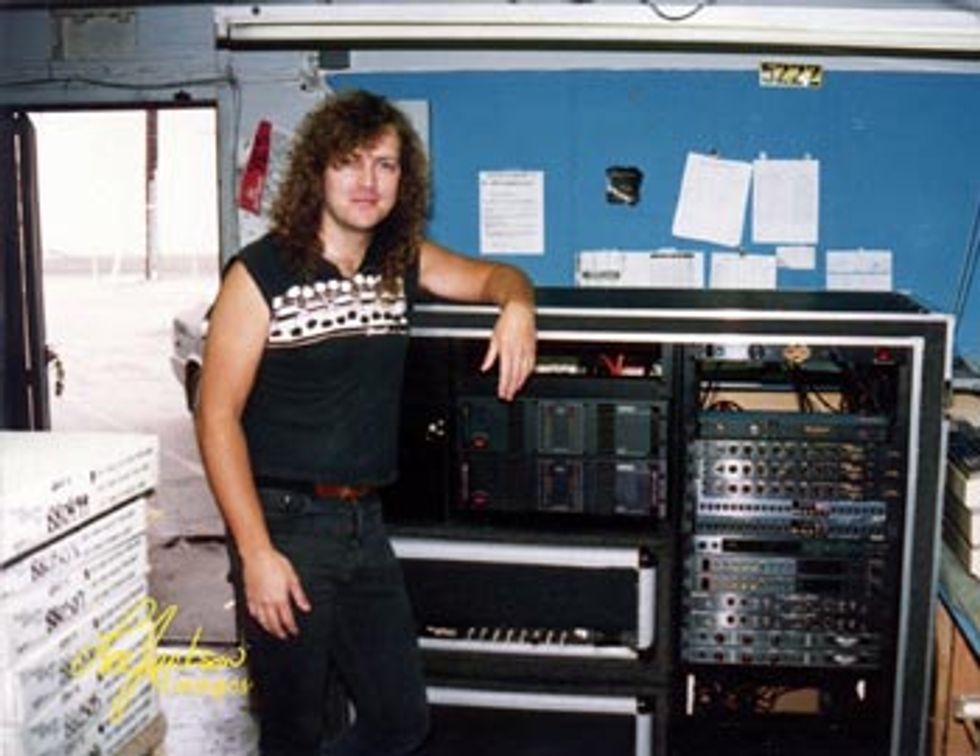 Lee Jackson with Zakk Wylde’s live rig, “The Widow Maker.” Photo courtesy of Lee Jackson. |
Boy, you have been doing some digging haven’t you? We only suggested that and used them for one artist: Zakk Wylde. In both his studio and live rigs, we used the Aphex units between the preamps and the power amps. He didn’t want anyone to know, so we blacked out the fronts of the Aphex units in his rigs so you couldn’t see them in his racks. The Aphexes added this huge bottom end that you can hear on No Rest for the Wicked... sorry, Zakk!
I recall that when the GP-1000 was released, perhaps some players didn’t understand what to do with a dedicated preamp. It was all still very new. There were bewildered comments that there was no bypass switch. Of course, it was your intention that this be a standalone preamp and not some glorified distortion box.
How did you deal with that?
At the time of its release, it was pretty straightforward. You would use as many of them as you would want channels. Remember, this was the ‘80s and channel switching was a new thing—not very many amps had it. Plus the GP-1000s were used in rack systems, so it wasn’t uncommon for players like Zakk to use three of them: one for clean, one for rhythm and one for solos. I’m sure now almost thirty years later, the new player who has a plethora of gear available to them wonders what the reasons were for the single-channel design. Everything on the GP-1000 was there because of the needs of the time it was released.
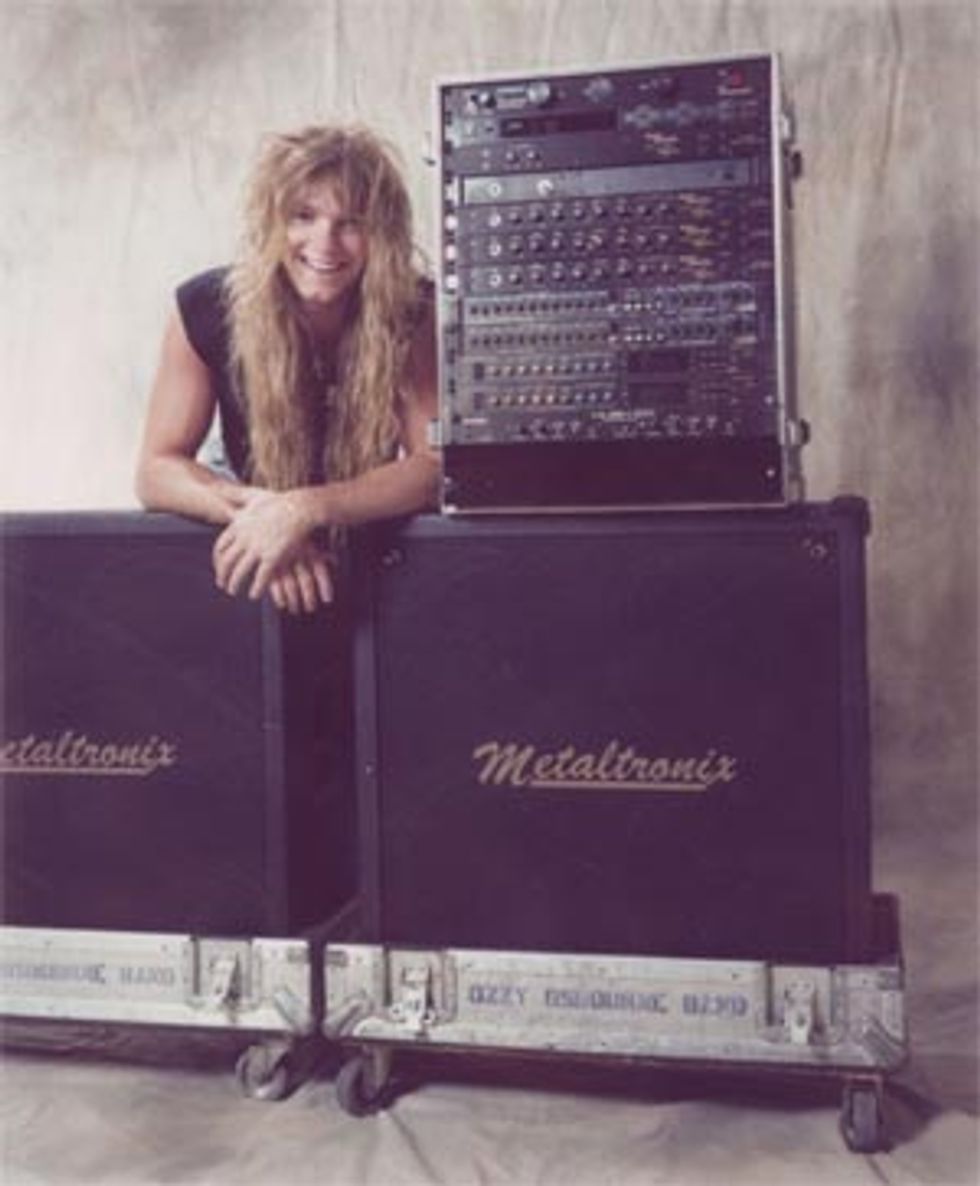 Zakk Wylde poses for a Metaltronix ad around the time of of the No Rest for the Wicked tour. Photo courtesy of Lee Jackson. |
It was an exciting time, the ‘80s. Hollywood was rocking, [there was] the competitive nature between the different bands and everyone was trying to find their edge. We were literally working on every big new album or CD that was coming out of L.A.—working with everyone from Dokken to Ratt to Ozzy, so we were just trying to keep up with the demand, because in the ‘80s products were truly driven by artist endorsements. Players really cared what someone was using to get their sound. We would design a custom rig for a famous guitar player, then build the same rig for players all over the world that would want that player’s sound.
How many were made?
I don’t have an exact number. It is in the ten to fifteen thousand range. We made them for every country in all different voltages.
What don’t people know about the GP-1000 that would surprise them?
The wildest place for a GP-1000 was the violinist for the Philharmonic Orchestra, who uses it as a preamp for the violin. And there is another famous fiddle player, Richard Bowden, who uses the GP-1000 as a preamp into the PA.
Why was the GP-1000 discontinued?
There was a major earthquake and the factory was flattened… No, I’m kidding! It might as well have happened. I remember the day well. GP-1000s had no competition. We came out of nowhere and nobody was ready to compete with us, until one day a new MIDI preamp was released. It had two 12AX7s and 128 presets, and it was the same price as ours. It didn’t even sound as good as the GP-1000, but it had 128 different sounds.
Our sales came to a complete stop… I mean not even a trickle. That’s when I rushed back into the design lab and designed and produced the M-1000, which turned out to be another slam run, so we stopped production on the GP-1000 and started making M-1000 tube heads and cabinets.
There are calls to re-release the GP-1000. Any plans to do that? How is the GP-1000II pedal coming along?
Yes, and I’m really excited about the new GP-1000, it will be everything the original one was, and it will have a couple of new features that will make it have a wider appeal. I’m going to make it in a pedal form. It can also be used in a rack, or on a tabletop. It isn’t going to be small because it has all the original circuitry plus more. I added a clean channel now, so you can switch between clean and distorted. Also on the hot channel, the overdrive is footswitchable, and I have made the Master outputs footswitchable, so you can select multiple amps. Like the early Metaltronix stuff, this pedal looks awesome— there is a custom heat sink that goes along the top of the pedal for tube cooling. The GP-1000II uses three 12AX7s running at 400 volts. This pedal is on fire, and will make everyone that has been looking for a GP-1000 very happy. The prototype pieces have been showing up all this month, and I will have production ready units soon. Check my website for updates on release times.
What are your thoughts about the very persistent misperceptions that Metaltronix gear and GP-1000 preamps are high-gain shred machines?
I know with the name like Metaltronix, you’d think we are only good for metal. Well, we are a full-spectrum company. The ‘80s were famous for metal, so the name was a great fit. I designed and built gear for every playing style and band from Kenny Loggins to Megadeth. One thing I have discovered is if you design a great piece of gear, it can be used for any style. I give you an example: Buzzy Feiten was playing for Kenny Loggins and Saturday night TV shows, and he wanted me to build him a couple of custom Fender combos. So I got them all done and they were in our test area where we made every player test their new amps out before they took them. I played on them had them all tweaked in, and I thought they had an awesome sound. Buzzy shows up with his guitar, plugs in, plays for a couple minutes re-tweaks all the knobs, sets them in a way I wouldn’t have, plays a little more… I’m starting to get nervous because it’s sounding weird to me, he stops, looks up at me and says, “These are the most awesome amps I have ever played.” The bottom line is if your design is versatile enough to cover every playing style, you can’t put a label on it.
What are your thoughts about new popularity of the GP-1000?
The GP-1000 has been strangely popular through out the years. Allan Holdsworth and Scott Henderson kept it alive during the heavy, over-the-top grunge period, using it for its purity of tone, which is obvious when you hear them playing them. Then you have great players like Alexi Laiho, who has been using the GP-1000 as a distortion pedal, plugging it into the front end of his amps and getting a great sound. It is really wild how the ‘80s are back with a vengeance. Its not the same… it is actually better now. There’s a beat.
 Jackson and the Metaltronix crew in the late ‘80s. Photo courtesy of Lee Jackson. Jackson and the Metaltronix crew in the late ‘80s. Photo courtesy of Lee Jackson. |
Recent eBay auctions have the prices of used GP-1000s selling in the $600-plus range and climbing. Can you comment on that?
EBay has probably been one of the best things in educating the public about me. The last time we did a count, we figured that I have over 150,000 pieces of gear with my name on it all over the world, from the Metaltronix to Perfect Connection, to Ampeg and Crate to the Lee Jackson line of amps, and not one piece is in the Vintage Guitar Buyer’s Guide. EBay has been selling my gear constantly since its start. The GP-1000 is a solid, classic piece of gear, built like a tank, designed with the best available parts, which is not a bad design ethic. I wonder where all these Chinese amps will be in thirty years.
Anything else you would care to add?
I would to thank all the artists that have used my gear, hung in there through my ups and downs and have sent me kind words of encouragement throughout the years. Thirty years later, I’m still playing and designing new products to keep up with the changing styles and markets. It has kept me being the big kid I was when I originally started Metaltronix many years ago. Thank you!
leejackson.com
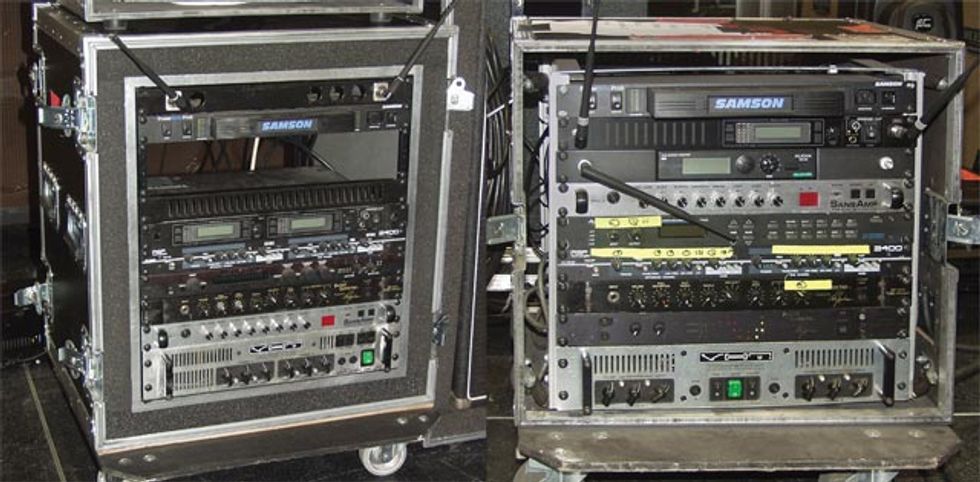 A pair of rigs featuring Lee Jackson’s GP-1000 belonging to Children of Bodom’s Alexi Laiho. |
GP-1000, Then and Now: Techs Speak the Preamp Truth
Although Lee Jackson has said that Loudness’ Akira Takasaki didn’t use the GP-1000, former Loudness manager Kazuo Sumida weighs in with his recollections:
On the On the Prowl album he had mainly used Lee Jackson’s modded Marshall. I also think his Lee Jackson modified Marshalls were the main gear for the Soldier of Fortune album and tour, but I also remember Akira using the GP-1000 in his house, with a Macintosh Power Amp and JBL speakers. The sounds were really amazing… big sound. The GP-1000 was in the rack case surely, but I did not know when he used a particular preamp. At the Dec. 31, 1989 Tokyo Dome concert he might have used that GP-1000 with Ashley power amps, or it could have been the preamp section of his Lee Jackson-modified Marshall.
Children of Bodom tech, Neubi, also spoke to me regarding another pair of famous proponents of the GP-1000: Alexi Laiho and Roope Latvala.
How long have Alexi and Roope been using the Lee Jackson Perfect Connection GP-1000 preamp?
I started working with Alexi in 2001, and he was already using the GP-1000. Alexi recorded the last CD, Blooddrunk, with the new model from Marshall, the Kerry King amp, and he was pretty happy with the sound. But as soon we started our next world tour, we had quite a lot of problems with these amps, so Alexi decided to go back to the old stuff he was using, because we never had any problems with these.
There are two or three basic versions of this preamp, which can be ascertained by the serial number. What are the serial numbers of these GP-1000 preamps?
They are 880531 and 870576. We do have a spare one, which I don’t have the serial number for right now, because the gear is on the way to the next festival.
Which brand of tubes are preferred for their GP-1000s?
Usually, we’re using Groove Tubes for preamps and power amps.
What are the settings for each GP-1000?
The settings for both players are different, but basically it’s: preamp Volume on maximum, Distortion [push-pull pot] pulled out and on maximum; the Middle pretty much on full, Bass and Treble in mid-position. Alexi likes a pretty bright and mid sound for his solo parts. Roope was using more low end on the preamp. I can add that both guys, Alexi and Roope, are using internal boosters for their guitars to get enough distortion from the preamp.
Have any modifications been performed on their GP-1000s?
Yes. Both preamps of Alexi and Roope are modified. A guy in Helsinki made them have a little more distortion.
Recent eBay listings of the GP-1000 have concluded at $600 and $620 and the value appears to be continuing to climb. This is no doubt in part due to its use by Children of Bodom. What are your thoughts on being the leading proponent on the GP-1000 and single-handedly raising the value and profile of these preamps?
From the tech side, I just can say this is one of the best compliments for the Lee Jackson guys. Alexi is one of the best shredders in the world, and of course especially on eBay, the prices will raise from day to day. Personally, I think it is a shame that they stopped building this preamp. I am sure many people would be happy if Lee Jackson would build a new version of the GP-1000 again in a 19-inch version.


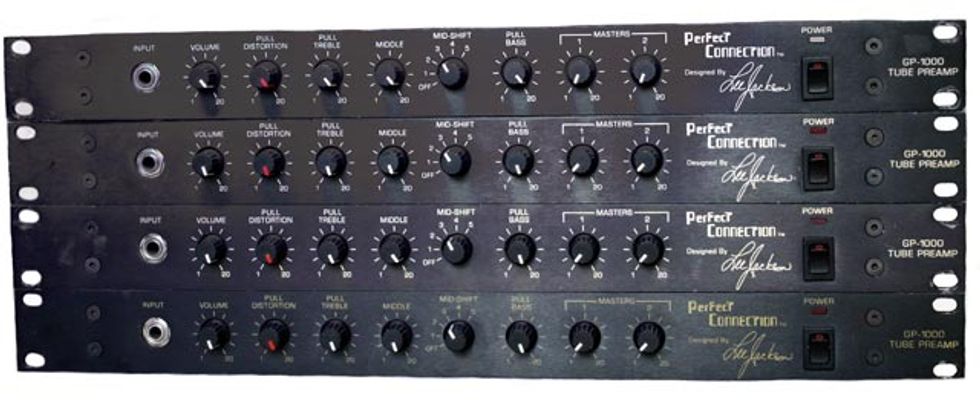

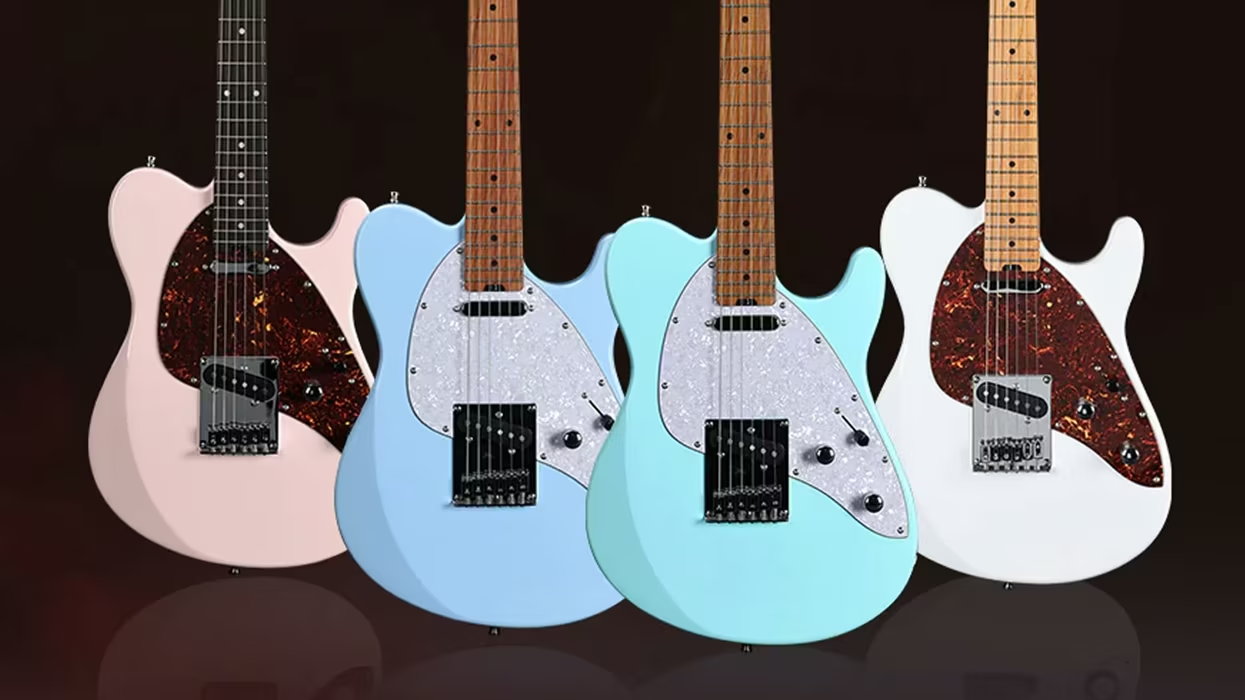

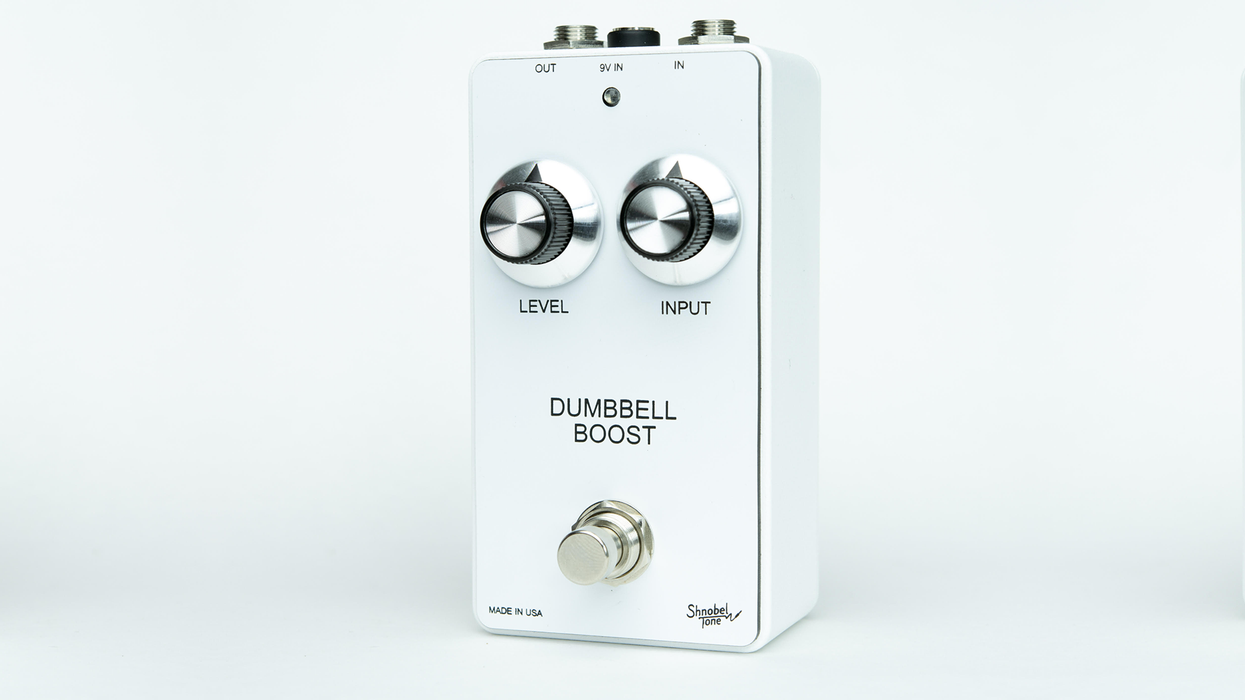



![Rig Rundown: Russian Circles’ Mike Sullivan [2025]](https://www.premierguitar.com/media-library/youtube.jpg?id=62303631&width=1245&height=700&quality=70&coordinates=0%2C0%2C0%2C0)

